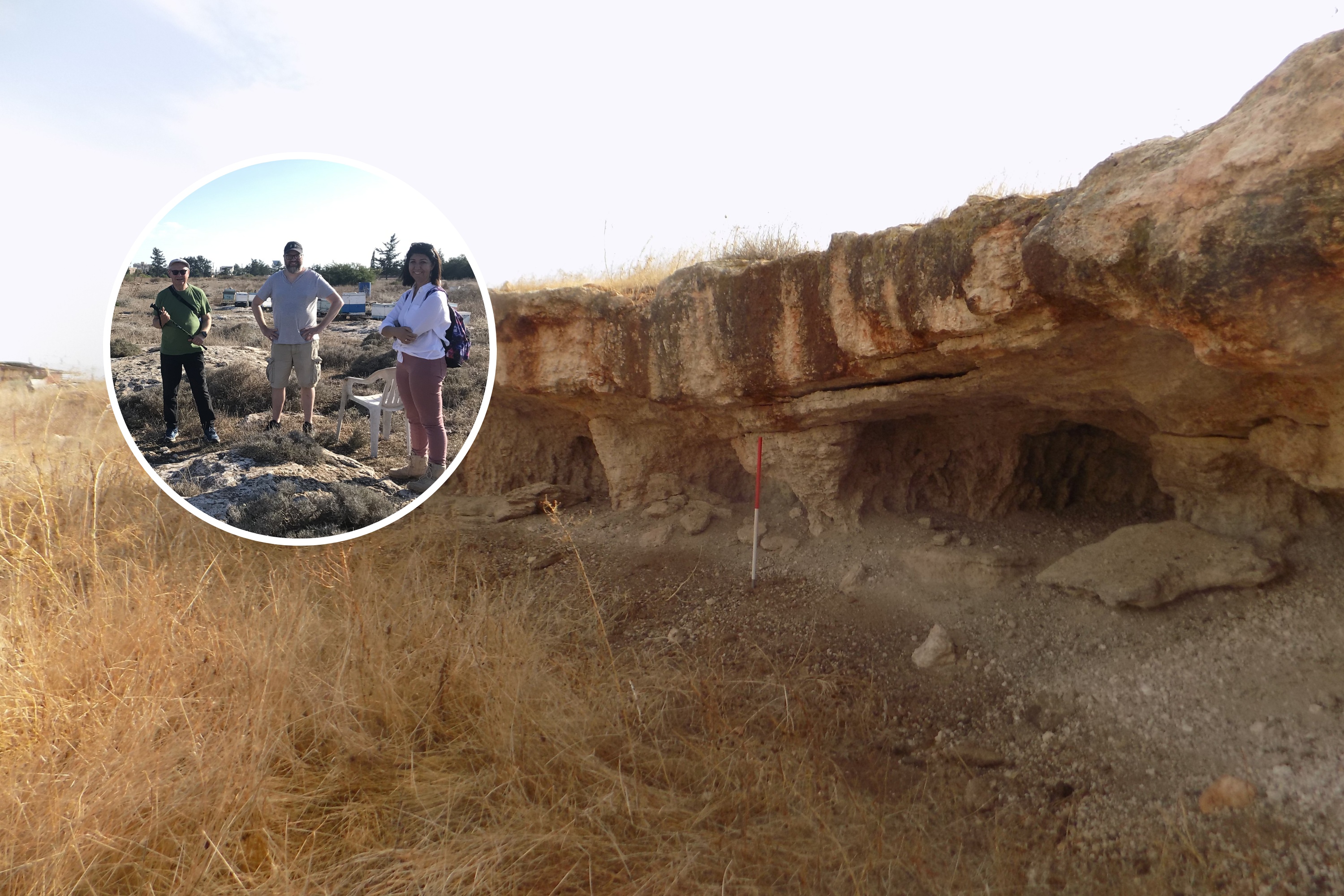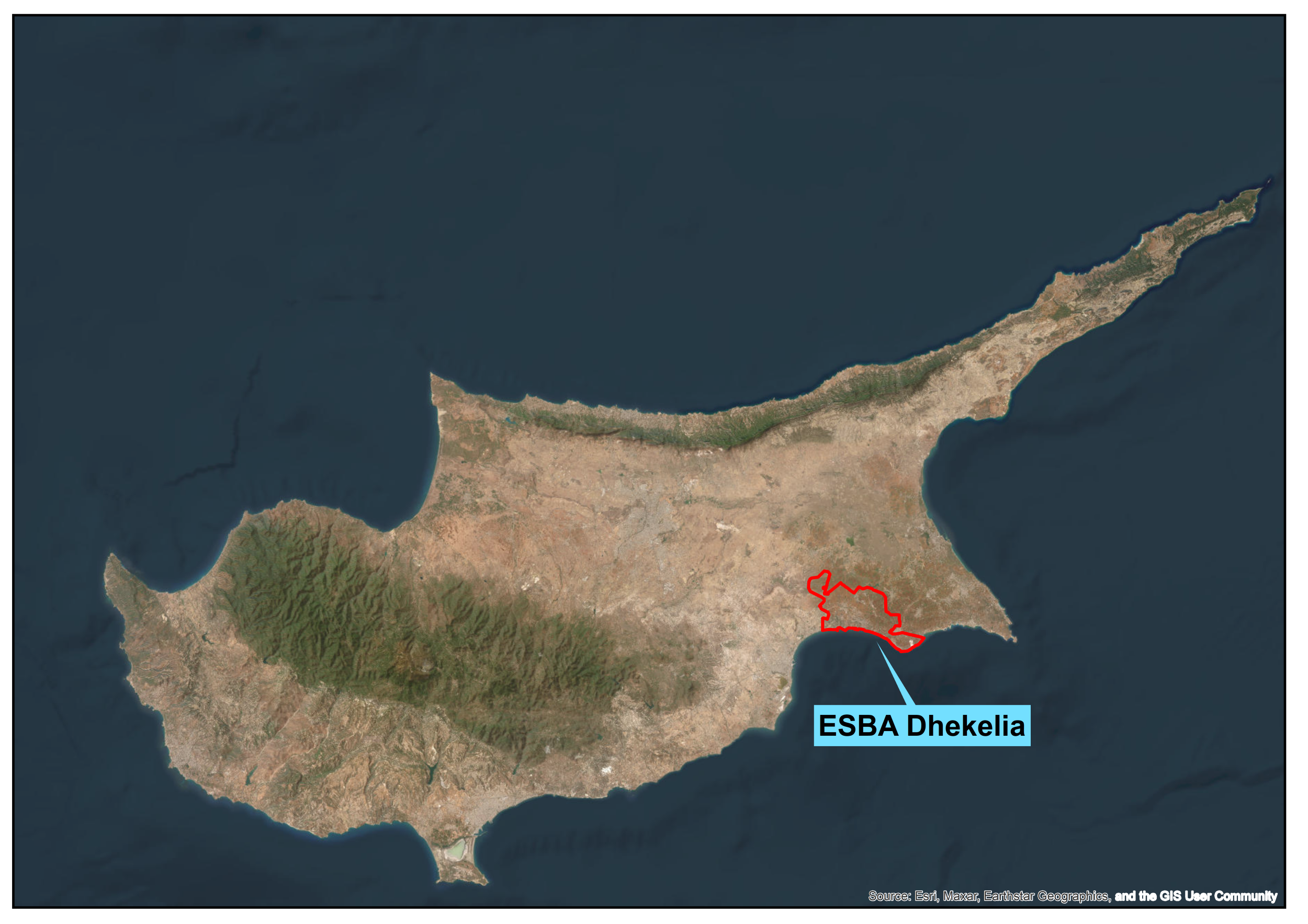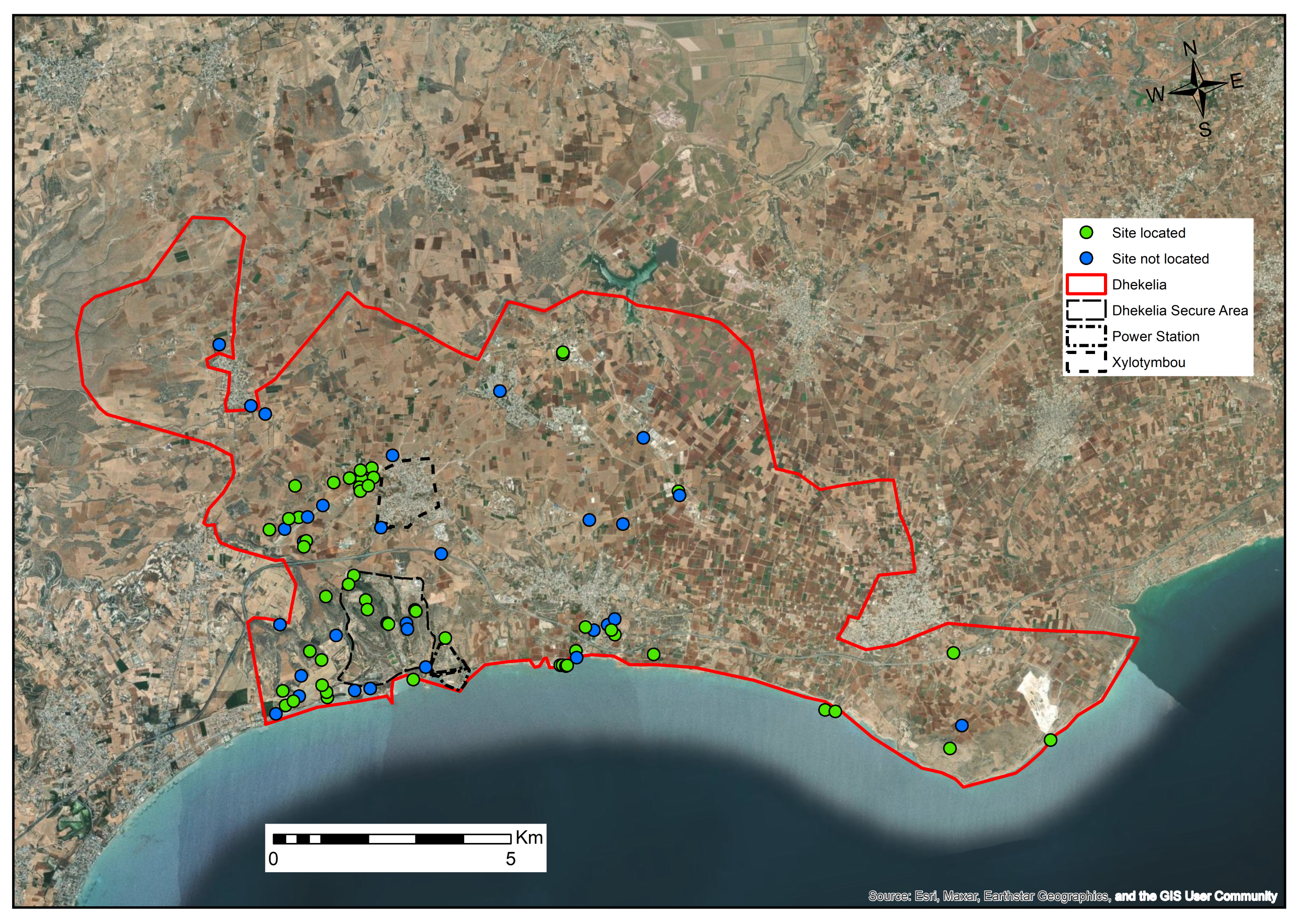Archaeologists have rediscovered several “lost” tombs within the territory of a British overseas military base.
The finds resulted from a survey conducted in the Eastern Sovereign Base Area (ESBA) at Dhekelia on the south coast of Cyprus, an island located in the eastern Mediterranean Sea.
Cyprus is a former British colony that gained its independence in 1960, although the U.K. still retains control over two sovereign base areas there, including the ESBA.
The latest “walkover survey”—carried out by a research team from the U.K.-based University of Leicester Archaeological Services (ULAS) unit—involved a systematic attempt to document and record visible archaeological remains in the ESBA.

The survey ended up identifying 51 archaeological sites in the 12-mile-wide area, the majority of which were thought to have been lost to history. Some potentially date back as far as the the Bronze Age.
The sites the archaeologists identified included five historic buildings (four churches and the remains of a watchtower) as well as other features.
“A single tomb or wall footing might be a ‘site’ if no other evidence can be found in the vicinity and the feature is convincing,” Matt Beamish, a researcher with ULAS who led the survey, told Newsweek. “Similarly, a building, or a multitude of tombs in a cemetery covering a hectare or more would also constitute a site.”
The goal of the walkover survey was to relocate around 60 possible archaeological sites that had been recorded in the early 1960s prior to the development of the garrison within the ESBA, and the laying out of the Kingsfield Airstrip at the western end of the area.
“The only record that survived for four of the sites was a label annotation on a 1:25000 map. All the other sites survived to varying degree in archive records although their locations were not mapped and work had to be done to locate the sites from the fragmentary evidence,” Beamish said. “All the sites have now been mapped.”
In preparation for the survey, the researchers compiled all known information about each of the possible sites before visiting them to search for the evidence that had previously been recorded. When a site was successfully found, the researchers then photographed it and recorded its GPS location.
“Many of the sites we were planning to survey had been last visited over 20 years ago, and in many instances had been reported as no longer existing or being unfindable,” Beamish said in a press release. “On reflection this had more to do with inadequate mapping, lack of preparation and lack of satellite location technologies: we found that many of the sites could be re-found with a little bit of patience.

“There were undoubtedly problems with some of the archive information which was incomplete and had been inaccurately redrawn at some stage in the past. Some sites had clearly been lost to the subsequent development of roads and buildings.”
The age of most of the sites is currently unknown but they likely span from the Bronze Age, which started around 2500 B.C. in the region, to the Byzantine period, which ended in the 12th century. Some of the sites potentially date to the Hellenistic period (312-58 B.C.) and the Roman period (58 B.C.-A.D. 395). The tombs identified in the survey include examples that were cut into rock, some of which were built into limestone caves.
Among the most significant finds of the survey, according to Beamish, was an “extensive” cemetery area to the west of Xylotymbou—a Cypriot enclave within the ESBA—with evidence of dozens of tombs.

The survey also identified the remains of three coastal quarries that the archaeologists suspect are ancient—but this has yet to be determined.
“We do not know the date of the quarries on the basis of the work undertaken,” Beamish told Newsweek. “It would be quite possible that they are of Roman date.”
Cyprus’ strategic location at the crossroads of Europe, Africa and Asia has resulted in a rich and diverse cultural heritage, with the island preserving numerous archaeological sites from the Bronze Age, Hellenistic, Roman and Byzantine periods.
The island has been divided since 1974 when Turkey invaded the northeastern portion. Northern Cyprus, the de facto state that administers the north, is recognized by no other country other than Turkey. All other states consider this territory to be part of the Republic of Cyprus.





